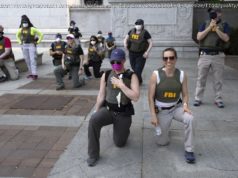"No worry man, I am here." Afghan photojournalist Shah Marai sent the WhatsApp message Monday to a colleague stuck in traffic, trying to reach
“No worry man, I am here.”
Afghan photojournalist Shah Marai sent the WhatsApp message Monday to a colleague stuck in traffic, trying to reach the scene of a suicide attack in Kabul. Minutes later, Marai, the chief photographer for Agence France-Presse, was killed in a second attack.
The 41-year-old photographer was one of at least nine Afghan journalists and more than two dozen others who lost their lives in the day’s coordinated suicide bombings, for which ISIS claimed responsibility. The second attacker was reported to have been disguised as a video cameraman.
A BBC Afghan service reporter was also killed Monday in a separate attack. It was the deadliest day for journalists in Afghanistan since 2001, and certainly one of the deadliest for journalists in any country.
Marai began his AFP career as a driver in 1996, and rose to become one of Afghanistan’s best-known photojournalists, “his income supporting a large family that included three blind brothers and two blind children,” New York Times senior Afghanistan correspondent Mujib Mashal writes.
In the late 1990s, a time when Afghanistan was largely isolated, Marai covered life under the Taliban — who threatened and beat him while they were in power, according to AFP — and was present in Kabul when they were driven out of power in November 2001.
“They hated journalists,” Marai recalled in a 2016 essay, “so I was always very discreet — I always made sure to put on the traditional shalwar kameez outfit when going outside and I took pictures with a small camera that I hid in a scarf wrapped around my hand.” The Taliban forbade photography of any living being, making photojournalism particularly risky, but Marai managed to shoot images showing grim scenes of daily life, including public amputations of suspected thieves’ limbs and women lining up for bread.
In the years that followed, Marai chronicled his country’s turmoil, its progress, and at times, the deaths of friends and colleagues — fellow journalists who lost their lives in Afghanistan’s violence. “Yet through it all he remained known for his humor, his love for his children — often bringing his sons to the bureau to visit colleagues — and his enthusiastic efforts to bring down office tension with games of ping pong or volleyball,” AFP reports. Marai was a father of six, including an infant daughter born in April.
In 2016,15 years after the Taliban fell, “There is no more hope,” he wrote. He explained his worries and uncertainty about the future: “Life seems to be even more difficult than under the Taliban because of the insecurity. I don’t dare to take my children for a walk…. I have never felt life to have so little prospects and I don’t see a way out. It’s a time of anxiety.”
A selection of Shah Marai’s photos from Afghanistan follows.






